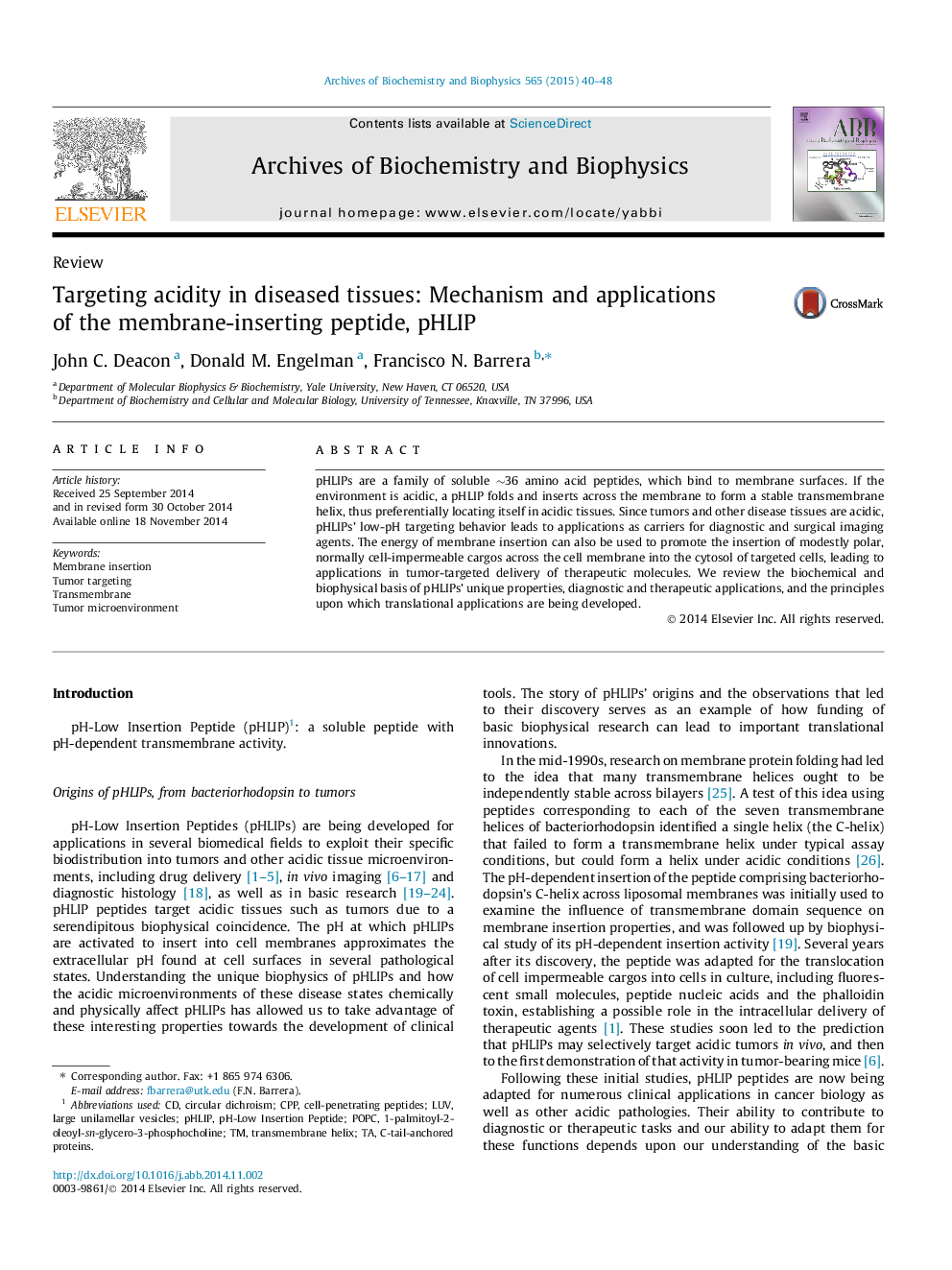| کد مقاله | کد نشریه | سال انتشار | مقاله انگلیسی | نسخه تمام متن |
|---|---|---|---|---|
| 1925058 | 1536337 | 2015 | 9 صفحه PDF | دانلود رایگان |

• pH-Low Insertion Peptides (pHLIPs) are soluble peptides that form a transmembrane helix in acidic conditions.
• The biochemical and biophysical properties of pHLIPs determine its tumor-targeting activity.
• Multiple promising applications of pHLIPs are being investigated for use in cancer diagnosis and therapy.
pHLIPs are a family of soluble ∼36 amino acid peptides, which bind to membrane surfaces. If the environment is acidic, a pHLIP folds and inserts across the membrane to form a stable transmembrane helix, thus preferentially locating itself in acidic tissues. Since tumors and other disease tissues are acidic, pHLIPs’ low-pH targeting behavior leads to applications as carriers for diagnostic and surgical imaging agents. The energy of membrane insertion can also be used to promote the insertion of modestly polar, normally cell-impermeable cargos across the cell membrane into the cytosol of targeted cells, leading to applications in tumor-targeted delivery of therapeutic molecules. We review the biochemical and biophysical basis of pHLIPs’ unique properties, diagnostic and therapeutic applications, and the principles upon which translational applications are being developed.
pHLIPs are a family of soluble ∼36 amino acid peptides (Panel A, State I), which bind to membrane surfaces (Panel A, State II). If the environment is acidic, a pHLIP folds and inserts across the membrane to form a stable transmembrane helix (Panel A, State III), thus preferentially locating itself in acidic tissues. Since tumors and other disease tissues are acidic, pHLIPs’ low-pH targeting behavior leads to applications as carriers for diagnostic and surgical imaging agents (Panel B). The energy of membrane insertion can also be used to promote the insertion of modestly polar, normally cell-impermeable cargos across the cell membrane into the cytosol of targeted cells (Panel C), leading to applications in tumor-targeted delivery of therapeutic molecules. We review the biochemical and biophysical basis of pHLIPs’ unique properties, diagnostic and therapeutic applications, and the principles upon which translational applications are being developed.Figure optionsDownload high-quality image (254 K)Download as PowerPoint slide
Journal: Archives of Biochemistry and Biophysics - Volume 565, 1 January 2015, Pages 40–48